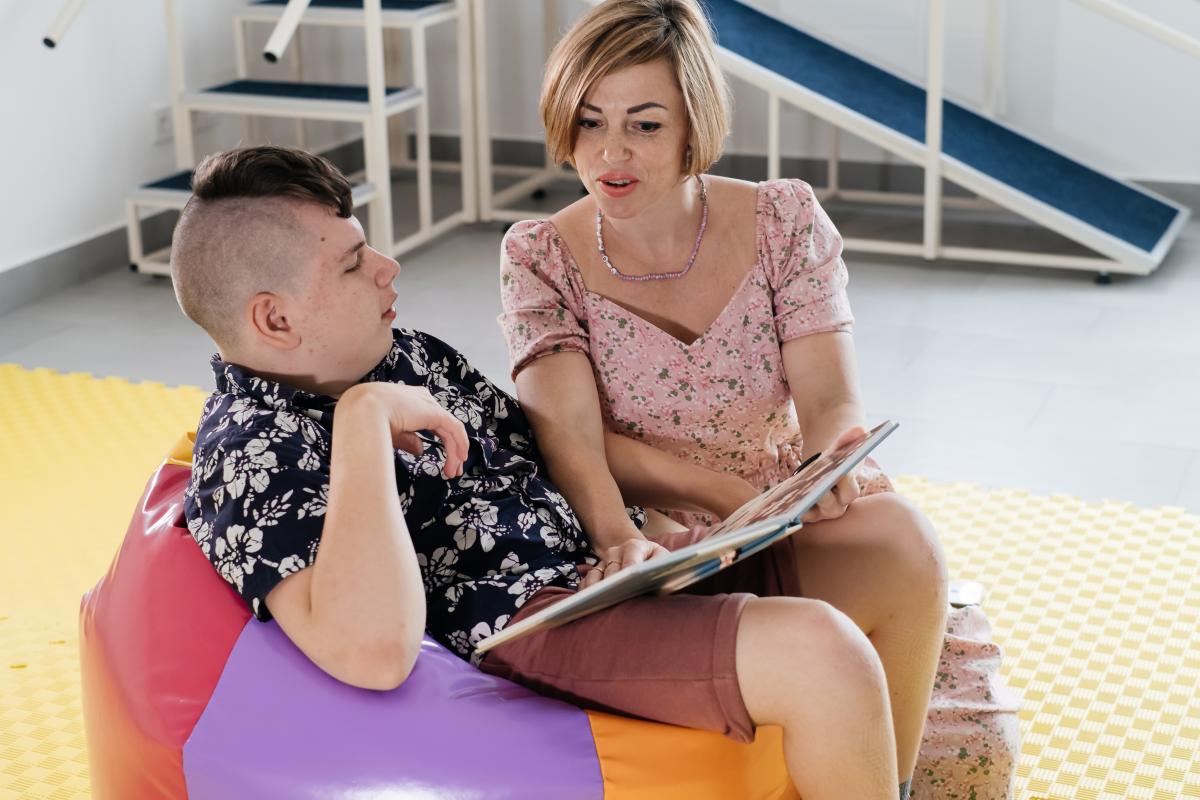
Cerebral palsy is a physical disability that affects movement across different parts of the body. This is due to damage to the brain, occurring either during pregnancy, at birth, or shortly after birth.
As cerebral palsy is a physical disability, it can impact posture, walking (gait), muscle tone, and coordination of movement.
Cerebral palsy impacts each individual differently. Some people with cerebral palsy can walk and move around independently. Others may require the use of a wheelchair to mobilise.
What Assistive Technology Will Help Participants with Cerebral Palsy?
There is a wide range of assistive technology that can support NDIS Participants with cerebral palsy.
A common question our NDIS Navigators get is "What assistive technology can I use my NDIS funds to help with Cerebral Palsy?"
We asked our resident OT to tell us what type of equipment she regularly prescribes to assist NDIS Participants with Cerebral Palsy.
Here are the main types of Assistive Technology she mentioned:
- Mobility Devices like wheelchairs, orthotics and walking aids
- Transfer Assistive Technology like hoists and slings
- Bedroom Assistive Technology like adjustable beds and pressure mattresses
- Bathroom Assistive Technology like shower commodes and toilet equipment
- Living and Dining Assistive Technology like seating and special trays
- Kitchen Assistive Technology like tools to help you cut and prepare food
- Communication Assistive Technology like picture boards and electronic communication devices
- Typing and Writing Assistive Technology like modified keyboards/mice, pencil grips, and wrist supports
- Hearing Devices like hearing aids, Bluetooth devices, and the cochlear implant.
- Therapy Assistive Technology like seating/standing systems, and gait trainers
- Assistive Technology for Children during Early Intervention
Mobility Devices & Assistive Technology to Support NDIS Participants with Cerebral Palsy
Manual Wheelchairs
Cerebral palsy can, in some cases, impact the lower limbs only. This is known as spastic diplegia or diparesis, where muscle stiffness is mainly in present the legs, with the arms less affected or not affected at all. In this scenario, a manual wheelchair is a great mobility solution.
Manual wheelchairs are lightweight and easily transportable. Manual wheelchairs can be used on their own, or with a power assist device.

Manual Wheelchair with a Power Assist Device
A power assist device can be added to a manual wheelchair to convert the manual propulsion of the wheels to power-assisted drive. Power assist devices are designed to enhance mobility by reducing the risk of overuse injury to the upper limb and lowering the onset of fatigue.
There are a variety of power assist devices available that are compatible with different types of manual wheelchairs.
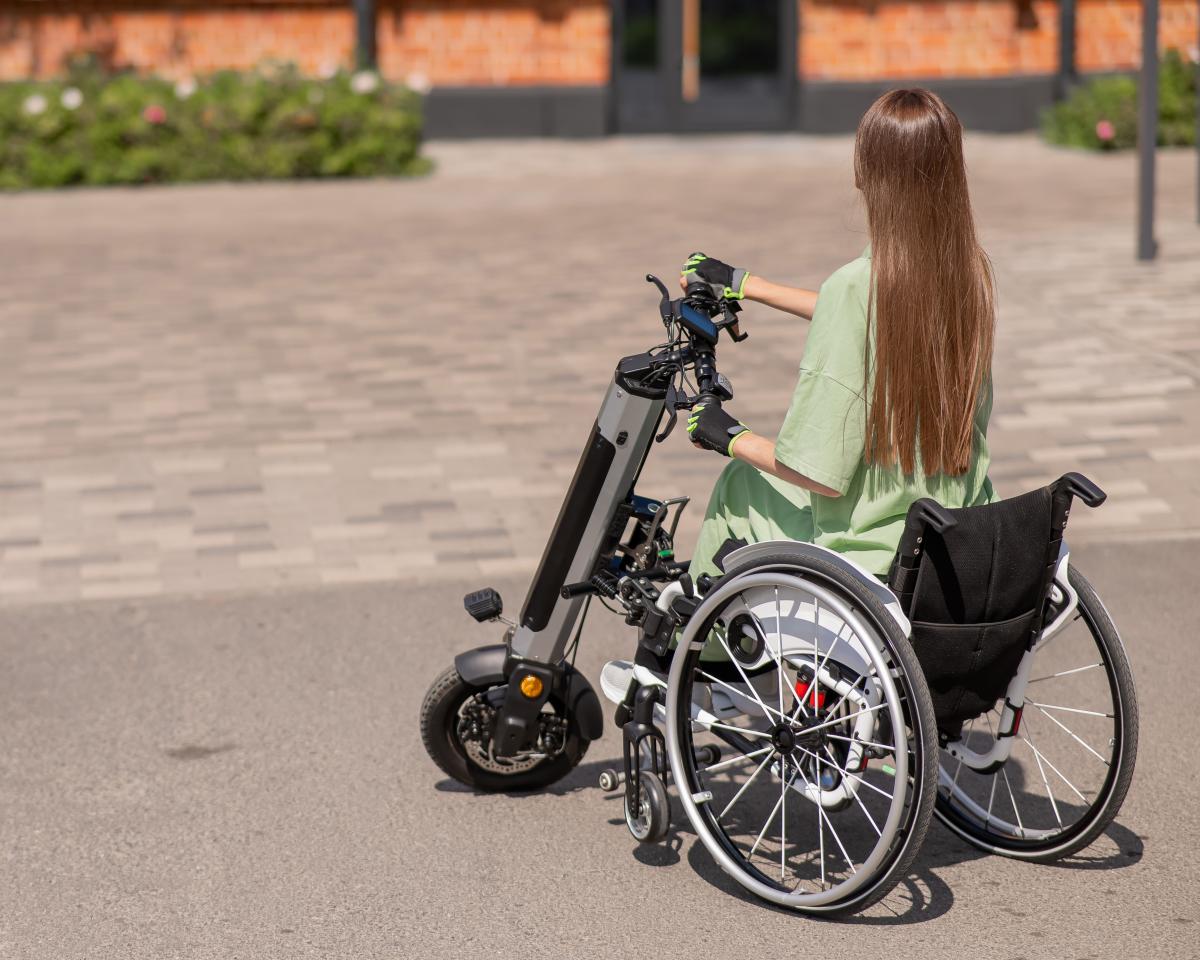
Powered Wheelchair
A powered wheelchair is appropriate when a manual wheelchair cannot be self-propelled and a more supportive and robust solution is required.
A powered wheelchair involves a base with motorised wheels that are controlled by a joystick. The joystick can be placed at the front of an armrest for the user to operate, or at the top of the backrest for carers to operate. Or both!
A seat cushion, backrest and other seating and positioning aids are set up on top of the base to support the user to maintain their posture. Specialised seating and positioning aids may be necessary when cerebral palsy has resulted in postural changes and contractures that require additional support.
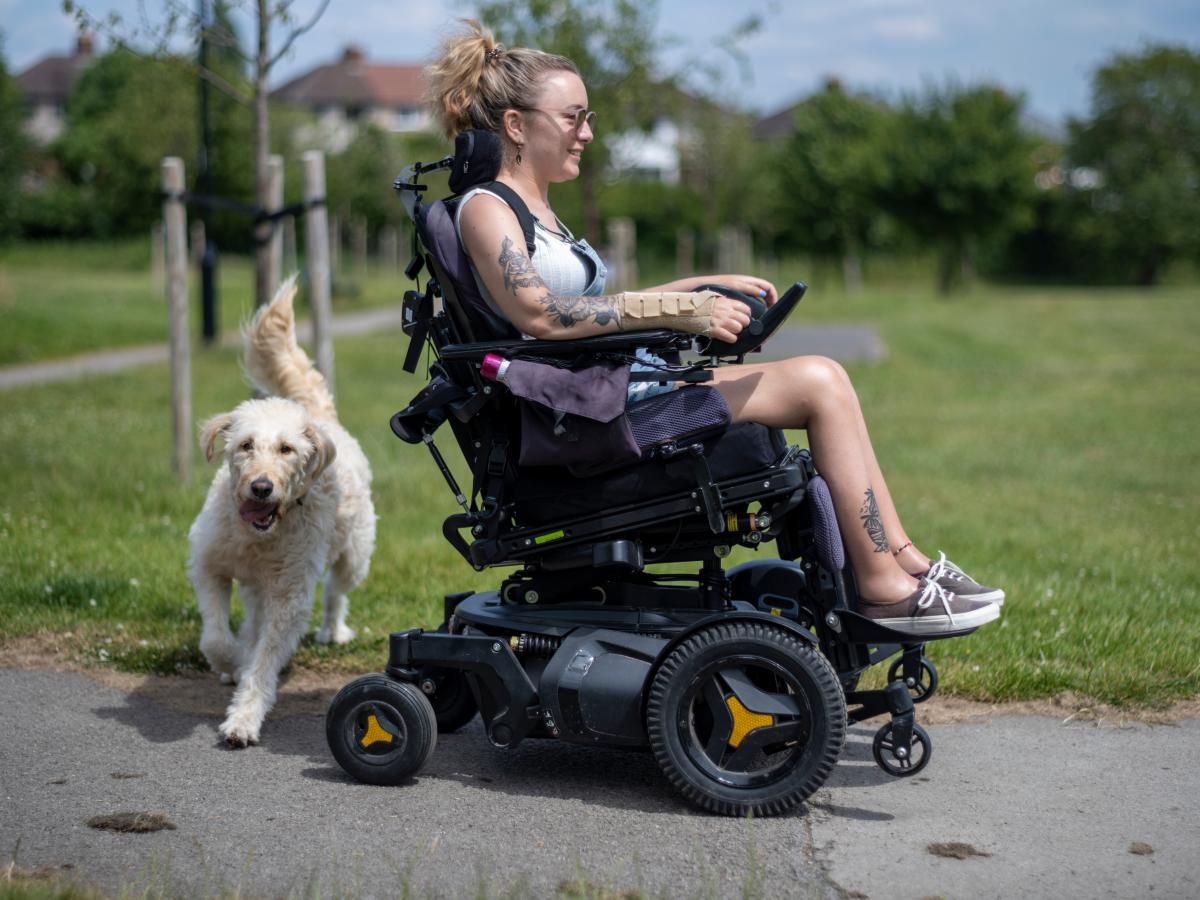
Ankle Foot Orthosis
An Ankle Foot Orthosis (AFO) is a brace worn to support one or both ankles which may be weak due to cerebral palsy. AFO’s are to help with ankle and lower leg alignment and stability.
Depending on your needs, an AFO may be hinged (made to bend at the ankle) or solid (no movement at the ankle). AFO’s can be worn underneath and inside your shoe to assist with walking.
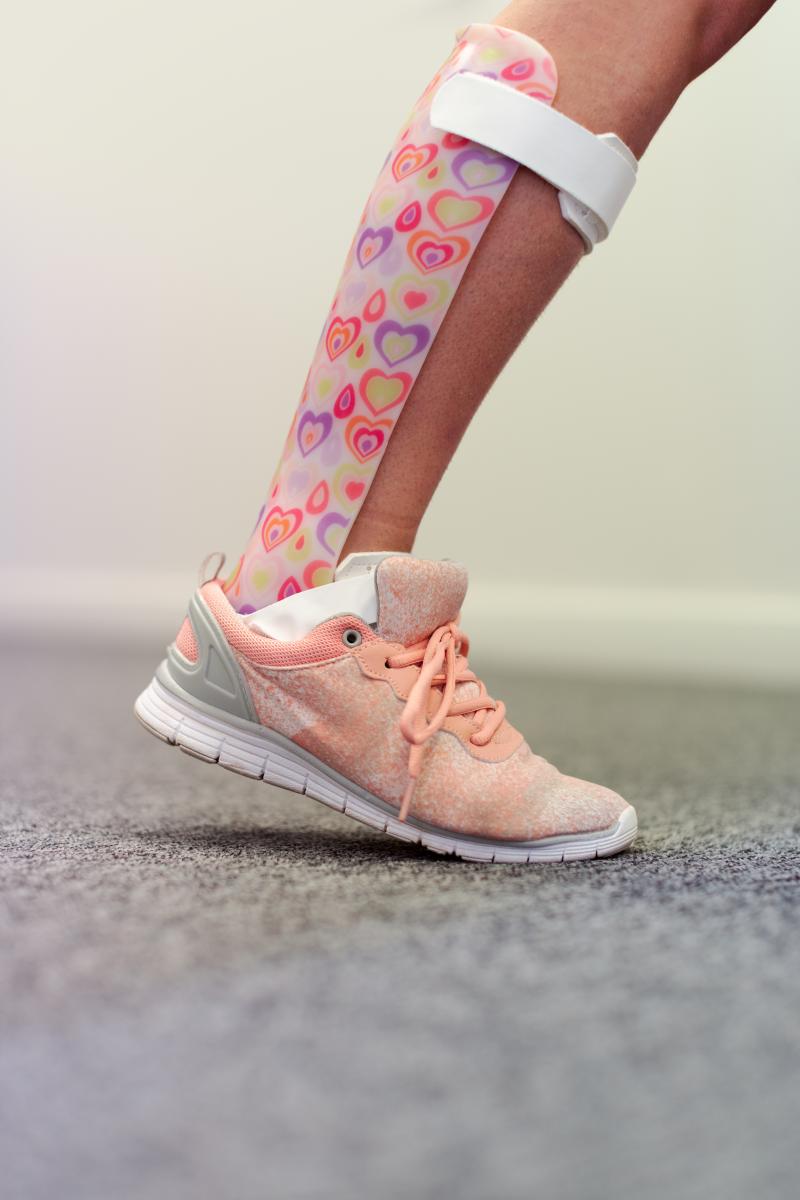
Walking Aid - Walking Stick or Four Wheeled Walker
Walking aids, such as walking sticks, four-wheeled walkers, forearm support frames etc, are mobility devices are helpful for people with cerebral palsy who can stand and walk with varying difficulties and therefore may need a bit of extra support for some or all of the time.
There are various types of walking sticks, walking frames and walkers available, depending on your mobility needs.

Transfer Assistive Technology
Mobile Hoist
A mobile hoist is a device that is designed to lift and carry (transfer) you from one surface to another. This may be from your bed to your wheelchair, or from your wheelchair to shower commode.
It has a mobile base that can be wheeled from room to room, so long as there are no steps inside the home or other obstacles. Typically, two support workers or carers are required to operate a mobile hoist.
Ceiling Hoist
A ceiling hoist is a device attached to a frame that is built into your ceiling. It can transfer you between surfaces, and can sometimes travel between rooms. It is usually easier to handle compared to a mobile hoist and usually requires one or two support workers or carers to operate.

Sling
Both a mobile hoist and a ceiling hoist require the use of a sling that attaches to the hoist via straps. A large fabric sling supports your whole body when you are lifted between surfaces. Slings can come in all different shapes and sizes, and be made of different materials and straps designed for a variety of hoists.

Standing Hoist
If you can weight-bear, but require a bit of additional support to stand up, a standing hoist can help you with completing transfers i.e. standing from sitting at the edge of your bed, wheelchair, or recliner chair.
Various slings and straps are available to assist you in using your standing hoist. Typically, a standing hoist is operated by one support worker or carer.
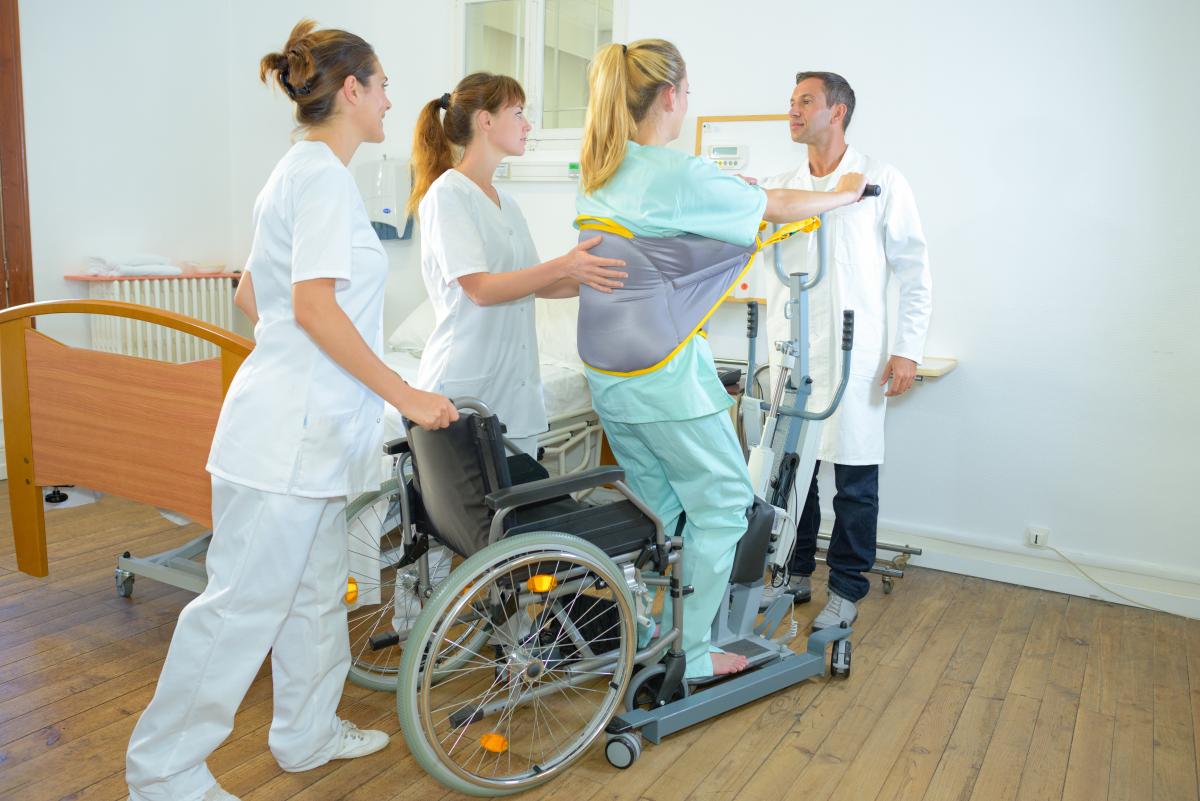
Bedroom Assistive Technology
Hi-lo Adjustable Bed
Bedroom assistive technology involves a hi-lo adjustable bed. An electronically powered hand remote is available to adjust the power features of the bed.
The power features have various benefits, including:
- Raised back section - elevates the head and body for comfort, positioning, breathing, and eating.
- Lower limb elevation and knee break - supports the lower limb in an elevated position for comfort, pressure care management, management of swelling etc.
- Height adjustability - the bed can be lowered to assist you with standing transfers (if completed), or raise the bed to a height best suited for support workers or carers providing care to you in bed.
An adjustable bed is beneficial for someone with cerebral palsy who has difficulty adjusting and repositioning in bed.

Pressure Relieving Mattress
Various pressure relieving mattresses are necessary for individuals with cerebral palsy.
Pressure-relieving mattresses may be:
- Foam mattress - consisting of various layers of foam to immerse the body and distribute pressure
- Alternating air mattress - Air cells within a mattress that are inflated and deflated by an automated pump to redistribute pressure throughout the body for pressure care management
- Combination of foam and air mattress - a pump-free mattress that combines air cells and foam padding to achieve comfort and pressure care management

Bed Positioning Aids/Sleep Systems
In some cases, additional cushions and support pads are required to support someone with cerebral palsy to sleep and rest in bed.
Their purpose is to provide support that may be necessary for spine and hip alignment, and support contractures resulting from spasticity. This aims to improve comfort and support fixed postures.

Bathroom Assistive Technology
Mobile Shower Commode
A mobile shower commode is a waterproof wheeled device that has a similar setup to a wheelchair. It may be helpful for you if you cannot stand to shower and/or require support for personal-care routines.
A mobile shower commode typically has an oval gap in the centre of the padded commode seat, similar to the inside of a toilet seat. This is beneficial as the commode can be wheeled over a toilet so that it can also be used for toileting.
When a support worker or carer is required, the commode has four smaller wheels, with two small wheels at the front and two small wheels at the back. A commode with two small front wheels and two large rear wheels is beneficial for you if you have the capacity to self-propel your commode to engage in toileting and showering routine independently.
A mobile shower commode requires an accessible bathroom. This involves level (flat) access into a shower recess which ideally does not contain glass screens or doors. The toilet seat needs to be low enough for the commode to wheel over.
Mobile shower commodes are more commonly required by people with cerebral palsy who require a hoist to complete transfers. This is because they may not be able to transfer on and off a standard toilet or shower chair. Additional positioning aids and supports can be attached to the commode.

Over Toilet Aid
An over toilet aid is a frame that can be positioned over your toilet to assist with sit-to-stand transfers. This is beneficial for people with cerebral palsy who can stand and walk, and need a little more support with transfers.
An over-toilet aid can promote your independence and reduce the need to rely on a support worker or carer to get on and off the toilet.
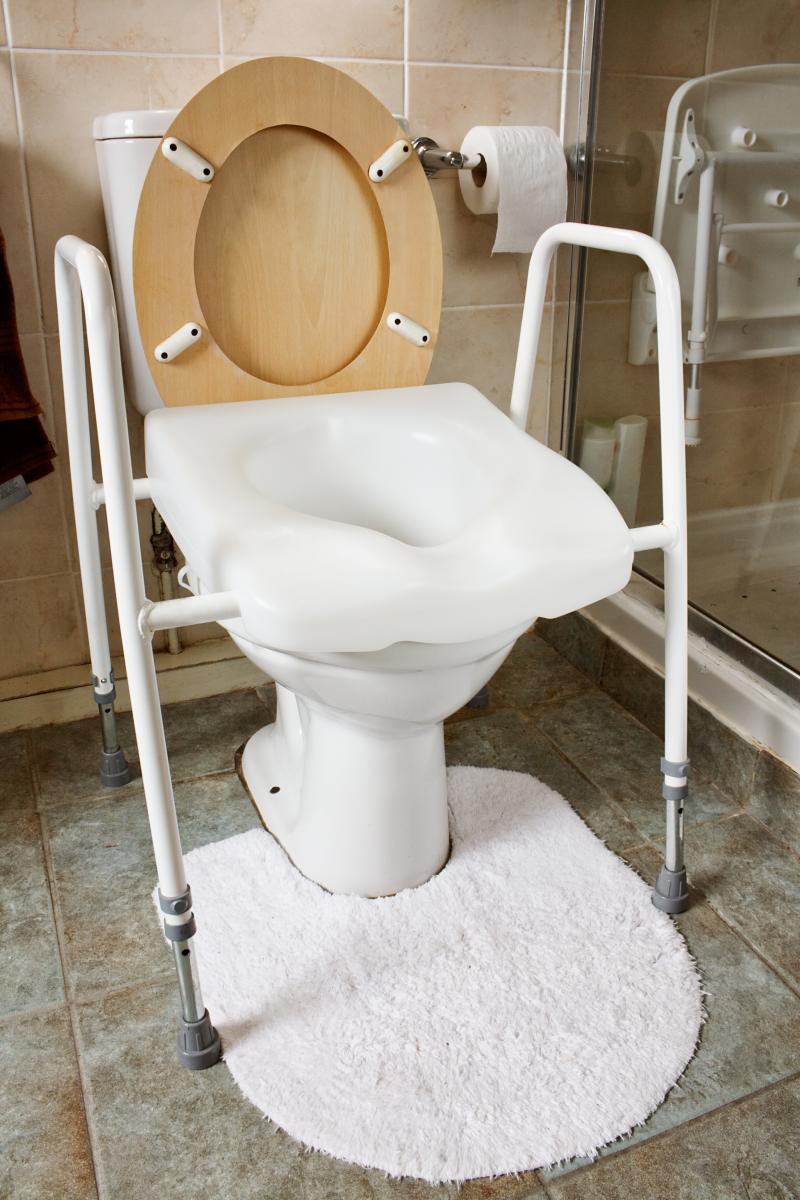
Shower Chair
In some cases, a shower chair may be the support you require in the shower if standing and balancing during your showering activity is difficult. Shower chairs come in all shapes and sizes, including shower stools with or without backrests and armrests.

Living and Dining Assistive Technology
Living and dining supports can often be overlooked when mobility and transfer assistive technology are prioritised. For someone with cerebral palsy and high physical support needs, a standard couch or armchair is unlikely to meet your needs and sitting upright and maintaining comfort will be a challenge.
In this case, a disability-specific recliner chair with additional positioning features is required, to provide an opportunity to sit somewhere else that isn’t your wheelchair or bed for relaxation, leisure and social engagement.
A tray table on wheels or a tray that attaches to the recliner chair is beneficial for eating meals and performing activities.
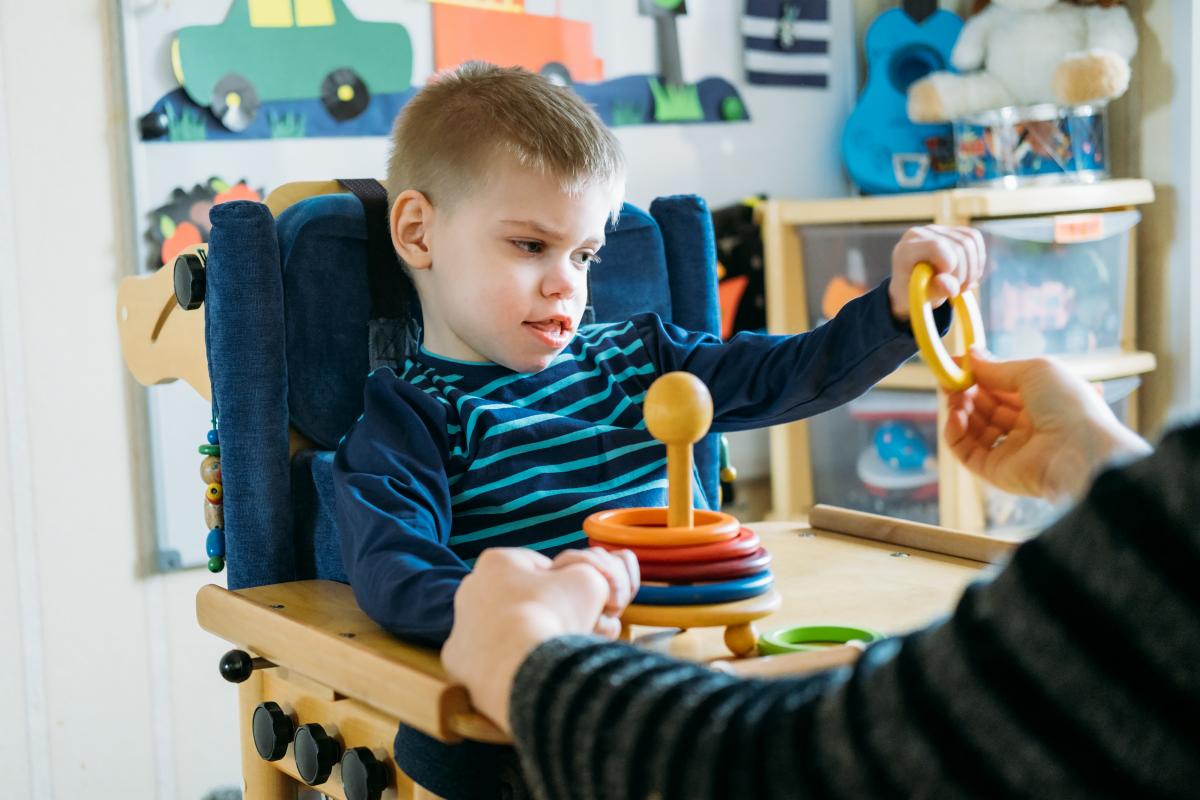
Kitchen Assistive Technology
Meal preparation aids can be used in the kitchen. This is beneficial for individuals with cerebral palsy that can engage in the kitchen for meal preparation, however due to reduced finger and hand strength and dexterity, may have difficulties completing some kitchen tasks.
Some examples of kitchen and meal preparation aids include:
- Modified chopping board
- Spreader boards
- Modified knives and utensils (thicker or different handle designs)
- Easy open devices - one-touch bottle, jar and can openers
- Kettle tipper device
- Thermomix (in some cases if deemed appropriate following trial with an OT)

Communication Assistive Technology
Communication difficulties may be experienced by someone with cerebral palsy due to muscle spasms in the throat, mouth, and tongue. This can impact word formation.
With limitations in the ability to communicate, it can be challenging and frustrating to express wants, needs, and emotions.
There are a wide variety of communication aids available, ranging from low-technology solutions to high-technology solutions.
Low Technology Communication Aids:
- Picture exchange
- Symbol boards
- Printed word board with common phrases
- Communication books
- Sign language
High Technology Communication Aids:
- Electronic communication boards
- Software vocabularies with voices
- Eye-tracking devices

Difficulties with typing and writing may also be necessary if impaired hand function is experienced.
Typing and Writing Aids
Typing Aids
Typing aids may involve a modified keyboard and mouse. This is to accommodate people with limitations in upper limb skills.
There is also talk-to-type software available which may be beneficial for you if your speech is not impacted but your physical capacity to access computer controls and accessories is limited.
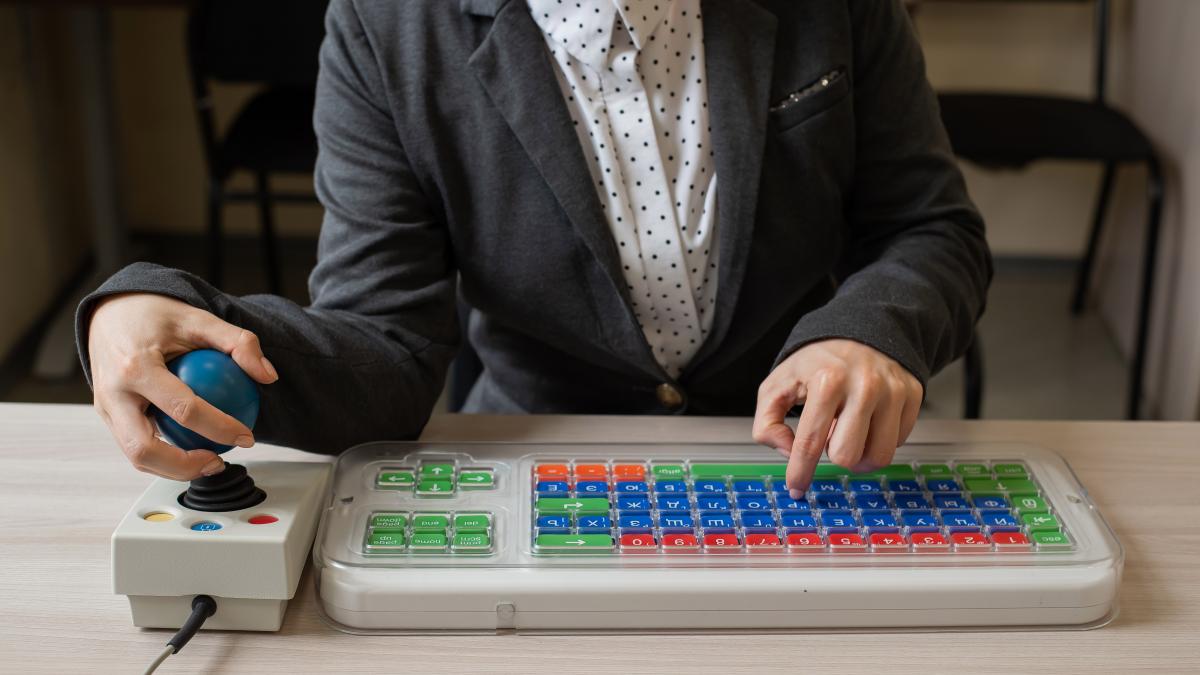
Writing Aids
Adaptive writing aids and tools are beneficial, particularly for children, who may have difficulties with grasping a pencil or pen or managing writing tasks on a level desk.
Writing aids may include:
- Specialist pencil grips and writing claws
- Handcuffs or cuffs
- Wrist supports
- Slanted writing board

Hearing Devices
Hearing loss is prevalent among people diagnosed with cerebral palsy. There are various hearing devices available, including hearing aids, Bluetooth devices, and the cochlear implant.
The Hearing Services Program, funded by the Australian Government, provides partially and fully subsidised hearing device options. The NDIS funds hearing support for NDIS participants aged 26 and over who are not eligible for the HSP.
The NDIS also funds additional reasonable and necessary hearing support for participants if they are not available through the HSP. This includes people under 26.
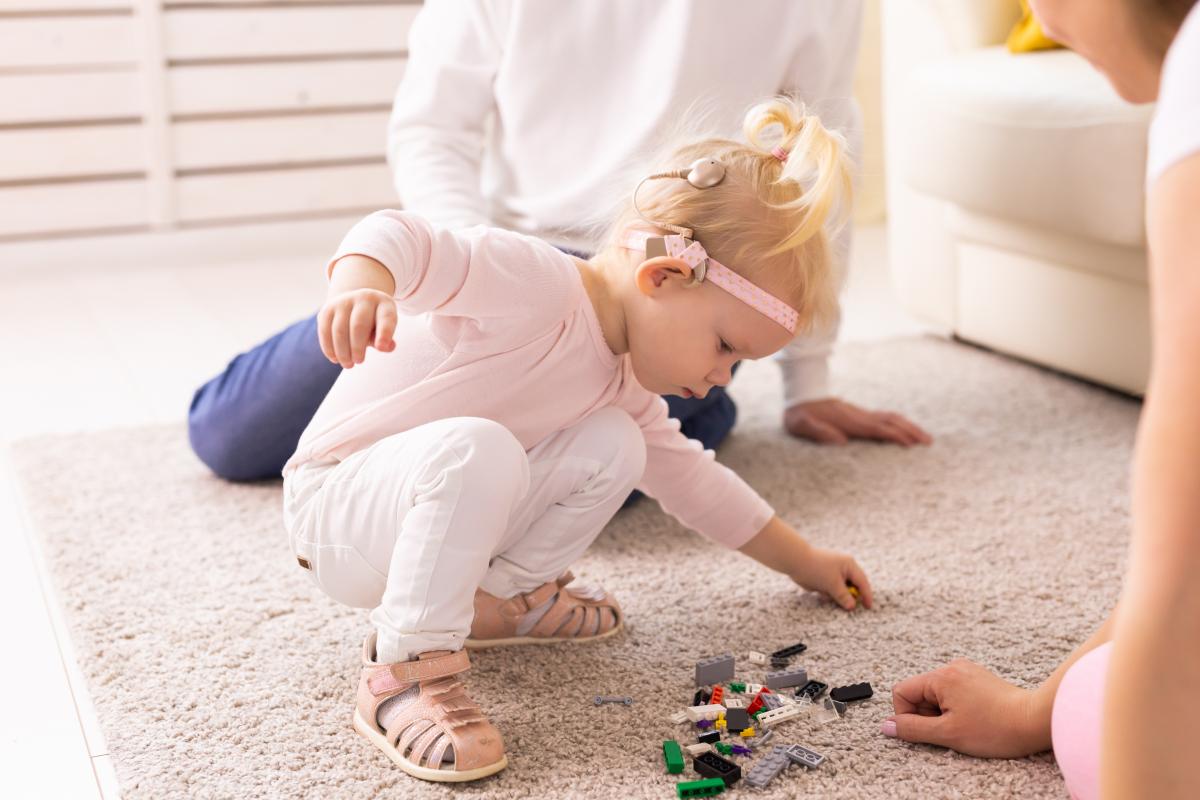
Assistive Technology for Physiotherapy
Assistive technology can play a large role in physiotherapy and capacity building, particularly in the early intervention stages of your NDIS journey.
Physiotherapy is the most common therapy and there are many devices to help support you during your Cerebral Palsy physio sessions.
Assistive technology and adaptive equipment for physiotherapy can include:
- seating systems
- standing frames
- gait trainers
- electronic gaming devices, such as Mouseware
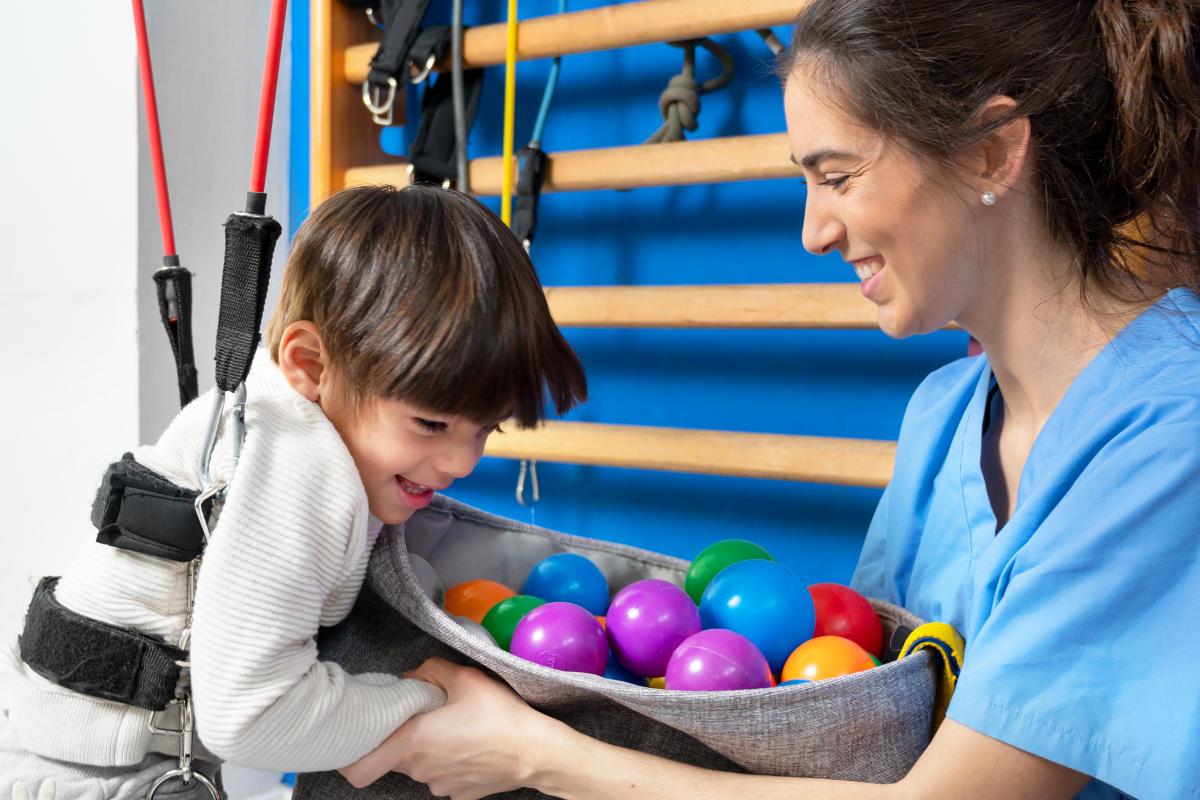
There is a wide range of assistive technology available. To learn what is right for you, you may benefit from a Functional Capacity Assessment from an Occupational Therapist.
The MyCareSpace NDIS Navigators can help you navigate the NDIS and find you a Physiotherapist with availability in your area.
Cerebral Palsy and High Physical Support Needs
High physical support needs involve a high level of person-to-person support and the use of assistive technology.
Person-to-person support may involve one person or two people assisting you with the various routines that make up your day, including showering, eating, drinking, toileting, etc. These tasks have a manual handling component, where you may require assistance to transfer or reposition.
Manual handling involves the practice of safe movements and lifting to reduce the risk of injury to the participant and support workers involved. In this case, using assistive technology may be necessary. This is to keep you and your support workers or carers safe.
In some cases, you may be able to operate assistive technology devices yourself, such as a powered wheelchair. Alternatively, you may require support to operate the assistive technology you require.
The MyCareSpace NDIS Navigators can connect you with Support Workers who have experience with CP in your area.
NDIS THERAPY FINDER - FREE SERVICE
LET US FIND YOU A SKILLED SUPPORT WORKER

